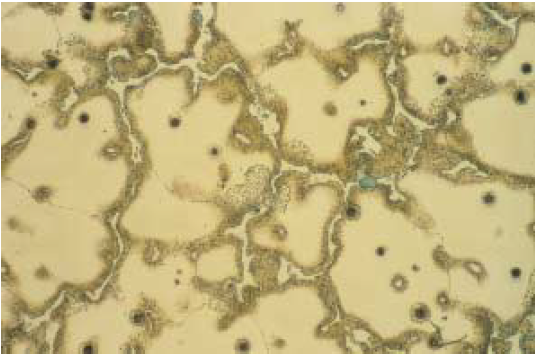Precise Wet Abrasive Cutting

Metallographic cutting is a crucial process in materials science and engineering, particularly in the preparation of samples for metallographic examination. The goal of metallographic cutting is to section a material in such a way that it allows for the subsequent preparation of a specimen suitable for microscopic analysis. This process must be done carefully to avoid altering the microstructure of the material, which could lead to inaccurate conclusions about its properties.

A good metallographic cutting process is essential to the efficiency and quality of your materialographic quality control. Our cut-off machines, consumables and accessories are designed to ensure an efficient, reproducible and precision cutting process, regardless of the material or size of workpiece.

Your metallographic cutting process should be as simple, fast and precise as possible. Our manual, automatic and semi-automatic cut-off machines ensure fast and deformation-free wet cutting of all workpieces and sizes
Precision metallographic wet cutting requires high stability and good cooling control to avoid heat deformation. From cutting tables and clamps to cooling units and pumps, our range of accessories are designed to ensure you get a high-quality sample in the shortest possible time.
Selecting the right cut-off wheel will help ensure a fast cut-off process, without causing structural changes to the wheel or specimen due to overheating or deformation – and improve cut-off wheel wear to help reduce costs. All our cut-off wheels, blades, additives and other cutting consumables are specially developed for metallographic cutting, including state-of-the-art abrasive wet cutting techniques and precision cutting.
Struers’ cut-off wheels are especially designed for Struers’ machines, including state-of-the-art abrasive wet cutting techniques. They have been specially developed for materialographic specimen preparation – producing specimens that are in perfect condition for the next preparation step.
You can improve your sectioning of virtually all cutting materials usinge Struers’ comprehensive selection of cut-off wheels and additives, such as Cooli Additive and Cooli Additive Plus, that allows you 3 times as many cuts. You can use, all Struers cutting consumables without causing structural changes to the wheel or specimen due to overheating or deformation, ensuring a maximum life time of the wheels.
Struers’ cut-off wheels are especially designed for Struers’ machines, including state-of-the-art abrasive wet cutting techniques. They have been specially developed for materialographic specimen preparation – producing specimens that are in perfect condition for the next preparation step.
You can improve your sectioning of virtually all cutting materials usinge Struers’ comprehensive selection of cut-off wheels and additives, such as Cooli Additive and Cooli Additive Plus, that allows you 3 times as many cuts. You can use, all Struers cutting consumables without causing structural changes to the wheel or specimen due to overheating or deformation, ensuring a maximum life time of the wheels.
How to select the correct cut-off wheel

If the hardness of the material is not known, find a suitable cut-off wheel according to material group from the figure above.
- Go upwards on the y-axis of the overview to the right until you find the hardness value of your material.
- Move to the right, until you cross the material group that fits your application. If you only have one material to cut, find the wheel where your material’s hardness is placed as close to the middle of the interval as possible. For two or more materials, see if you can find a wheel that covers the whole hardness range.
- Find the number (I-XI) of the material group, and see the table below for the code of the correct wheel for your cut-off machine.
Always remember that the goal is to:
- To obtain a representative cross-section of the material for examination.
- To minimize damage, such as deformation or thermal alteration, to the sample
And the main challenges are:
- Heat Generation: Excessive heat can alter the microstructure, leading to erroneous results. Proper cooling and cutting speed must be managed.
- Edge Rounding: The edges of the cut section can become rounded, especially in harder materials, which may require additional grinding and polishing.
We are here to support by providing you with top notch equipment, long lasting efficient consumable and our application support.